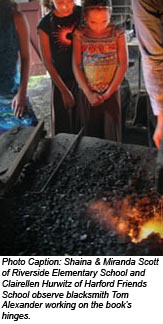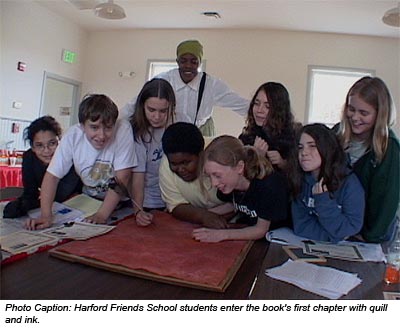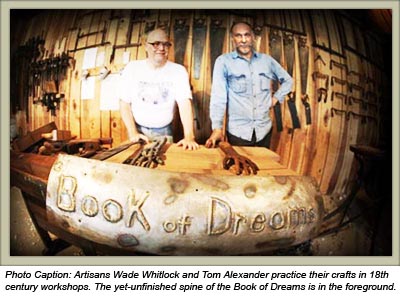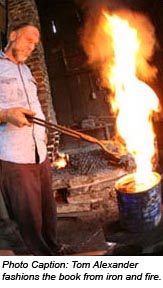I was a little nervous when the students at Harford Friends School and I began our studies of The Underground Railroad,and local Black history.. After all, this was the Book’s first chapter, and uncharted territory for all.
As the kids settled in to the project,my fears were replaced with pride. After four three hour sessions, the first chapter of an original piece of fiction inspired by our studies had been composed. The story centers around a boy and girl, both slaves. The kids worked together, with no help from teachers or parents. I’m very proud of what they created. (click here to read) I emphasized to the students that there is history beneath our feet, and in front of our faces, everyday, everywhere. It’s just that many of us never bother to check it out,because we don’t know it’s there.
I knew that we would not have to look very far to find some tasty local Black history. After all,we live in Maryland!
As it turned out, we would Christen the Book Of Dreams by entering the first chapter just two miles from our school.
In 1867,a one room school house was built from wood,and stood amidst the rolling farm land of Darlington,Maryland. The school was for black children only,during the long years of segregation. The Hosanna school has been restored to it’s original condition.. It still stands alone with fields all around,as though little had changed. As we entered the classroom, there was a silence,occasionally punctuated by the creaking of a wooden floor board..The old desks were still in their original positions,empty and mute. A pot belly stove sat in the same corner as it always had when it was the sole source of heat for the small building. There was a quiet energy about this place..
 It would not have taken much to imagine the ghosts of children and teachers long gone, learning to read,write,and add in this very room. Many of the children and some of their parents who had never learned to read walked 6-7 miles each way,rain or shine. Teachers in black schools such as this were paid about half of what teachers in the white schools were paid. The curriculum in black schools was very different than in white schools as well. The local board of education explained the disparity by stating that the black children would grow up to be farm hands,so they did not need the same level of education as their white neighbors children. The cool thing about today was, that we did not need to imagine ghosts.. We had Christine Tolbert with us, who along with her parents and grandparents, had been a student here as a young child.
It would not have taken much to imagine the ghosts of children and teachers long gone, learning to read,write,and add in this very room. Many of the children and some of their parents who had never learned to read walked 6-7 miles each way,rain or shine. Teachers in black schools such as this were paid about half of what teachers in the white schools were paid. The curriculum in black schools was very different than in white schools as well. The local board of education explained the disparity by stating that the black children would grow up to be farm hands,so they did not need the same level of education as their white neighbors children. The cool thing about today was, that we did not need to imagine ghosts.. We had Christine Tolbert with us, who along with her parents and grandparents, had been a student here as a young child.
We also had Gladys Williams who was Christine’s teacher,right here in the very room in which we all were now seated.
Today,they would both be OUR teachers. The kids listened well,and asked many questions as the ladies wove their stories of a bygone era..Later,Tamika Hudson read two original spoken word pieces to us all, in the voice of Harriett Tubman. Christine told us that even when she was a child,there had always been strong relationship between the Deer Creek Friends Meeting,and the Hosanna School, and surrounding black community.She said that today felt like a family reunion of sorts. Tamika and Gladys seemed to really hit it off,as did we all.The kids then put quill pen to Cotton paper,and the first chapter had been entered.
It was an awesome day, and not one that any of us will soon forget. I know that the Book will travel to many schools and historical sites,and I’m looking forward to seeing it take on a life of it’s own.
Via EPR Network
More Education press releases



